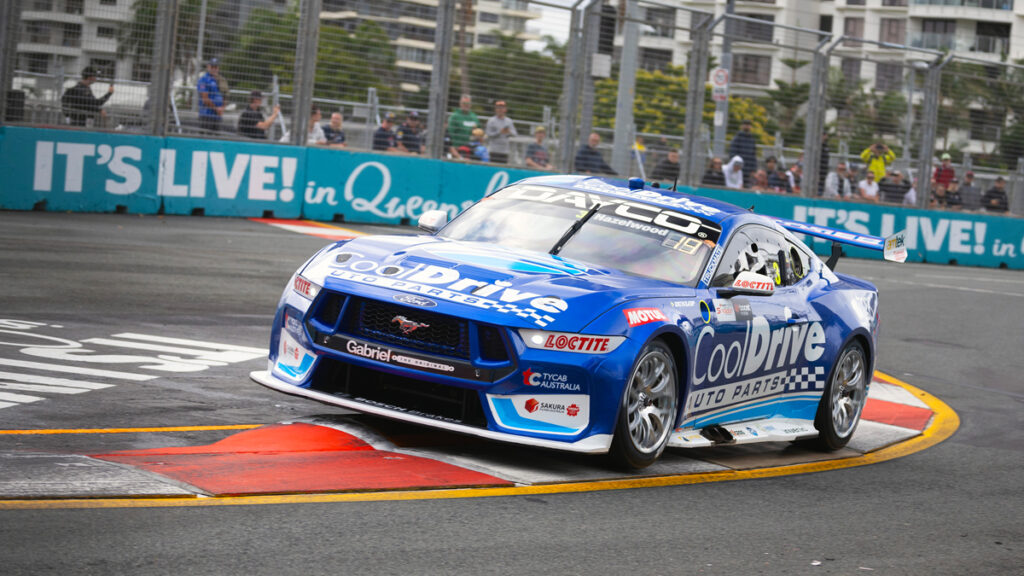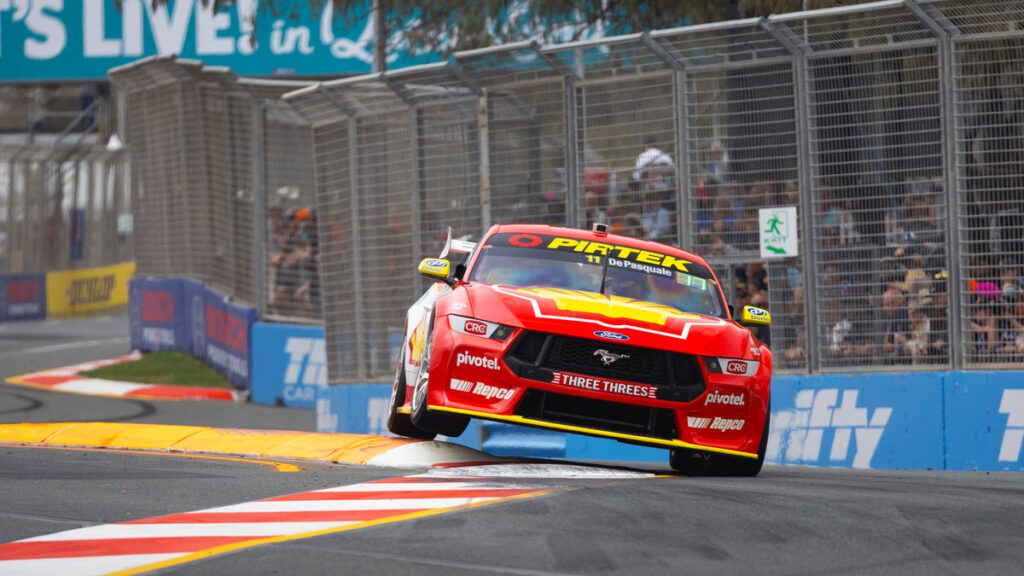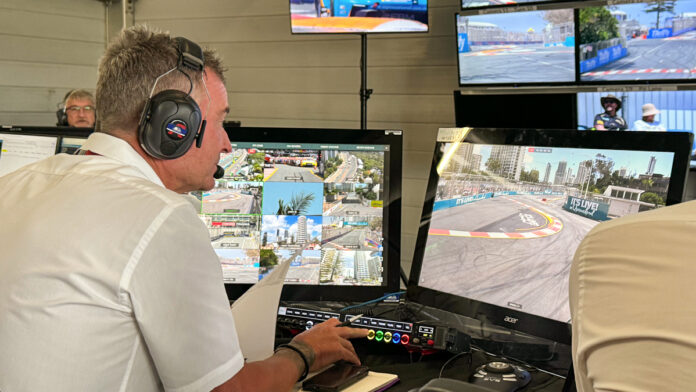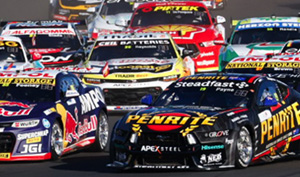SUPERCARS Driving Standards Advisor Craig Baird is adamant the electronic system for policing track limits at the Boost Mobile Gold Coast 500 is accurate.
And he has countless examples from Friday practice to prove it.
Using electronic timing loops embedded in the circuit at Turn 2 and the beach chicane to police kerb hopping is not a new phenomenon in 2023.
However, the system is under the microscope more than ever due to the removal of tyre bundles from the apexes.
That decision was made by Supercars largely to protect the more fragile Gen3 cars amid fears that striking the bundles would break their front bars.
There had already been an appetite to remove the bundles following their role in a frightening multi-car incident in the Sunday race last year.
Work has since been undertaken to improve the accuracy of the sensors, and Baird spent Friday’s sessions cross-referencing the electronically recorded breaches with CCTV footage.

Baird and his team have instant access to an array of dedicated, locked-off cameras focusing on the chicanes.
While cars can climb the kerbs, they have to have at least one wheel touching or inside the yellow line that defines the track.
An additional orange line has been added to the inside of the kerbs this year as a visual reference for the drivers.
“I’m 100 percent confident,” Baird told V8 Sleuth of the system’s accuracy following Friday practice. “It’s just so simple.
“Every time it went yellow on the hop (the electronic sensor was triggered and displayed on the timing), I would wind back on the EVS (electronic video) system.
“Every one I went through has clearly shown the car is outside track limits.
“We went through over 100 (on Friday), including team managers and engineers coming up and saying ‘no, my driver didn’t on that lap’.
“We proved it to them throughout the day. I said ‘go away, look at your vision, bring one to me where the car has triggered it with a time stamp and is inside track limits’.
“Not one comes back.”
V8 Sleuth’s coverage of the Boost Mobile Gold Coast 500 is proudly presented by Bad Boy Mowers – explore the world of Bad Boy Mowers with the new Spring/Summer catalogue of high-performance mowers here.
Breaching the track limit results in the corresponding lap time being deleted during practice and qualifying.
In races, each driver gets an undisclosed allocation of breaches. Exhausting the allocation once earns a bad sportsmanship flag. Twice means a five-second penalty.
This year drivers are notified of their kerb hops during practice and qualifying via their dashboard, so they can abort that lap if necessary.
The kerb hop notifications though are not shared with drivers or their teams in the races so that they cannot ‘save up’ breaches to go rogue in the final laps.
Three-time champion Shane van Gisbergen publicly criticised the sensor system on Thursday, and said after topping Friday practice that qualifying will be a lottery.
“That (best) lap that I did, I was like ‘that was a cut’ and then ‘no cut’, so I thought we’ll carry on with it,” he said. “It’s just so random. Qualifying I think is just going to be luck.”
Second-fastest man Mostert – who came up with the idea of the orange reference line as part of his work with officials on behalf of all drivers – had a more positive view.
“When I have kind of question marked myself if I had a hop, I’ve got a hop,” he said. “I haven’t run across them and thought I’d be fine and ended up with a hop.”

Jack Le Brocq, third-quickest on Friday, believes the removal of the bundles had made it harder for the drivers.
“It’s such a fine line,” he said. “It’s probably harder than what we had previously, I’m finding anyway, without the tyre bundles there.
“(Before) you could sort of drive to that and also feel where you are with the car when you do clip them.”
Baird is incensed by continued criticism of the electronic system and passionately defends it.
“I’ve been a driver, I don’t want any penalties, but you can’t have a free-for-all,” Baird continues.
“You can’t play Wimbeldon and say ‘don’t worry about the lines’. It’s got to be fair for everybody and that’s fair.
“Deep down they all know the system works, but they’ll all say when they strike it that they weren’t out.
“We can prove with the footage, frame-by-frame, whether they’re in or out. I don’t find one that’s lying to me. That’s all I can do.”





